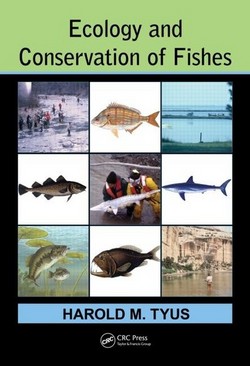
Ecology and Conservation of Fishes
By
Harold M. Tyus
Preface:-
My ichthyology and fishery since professors assured their classes that ocean fisheries should supply adequate food for an increasing human population (e.g., Daniel and Minot 1954). But this was not being true. Instead, major marine fisheries have collapsed, and there are worldwide declines in freshwater fish populations. Where impacts have been due to overfishing without major physical habitat destruction, recovery has been possible. Where habitat destruction also has occurred, short term recovery has been lacking.
The cause of freshwater fish declines and losses is no mystery. It is primarily due to effects of an ever-increasing human population on fragile and isolated systems. These effects have reduced the distribution and abundance of fish populations by widespread changes that happen too rapidly for natural selection to respond.
How pervasive are continuing anthropogenic effects on the environment? Some, if not most climatologists believe that human interference has so altered planetary function that the relatively stable period that began after the last ice age (i.e., Holocene) has ended. A new era of climate change is in progress, and it has been named the Anthropocene, a term attributed to Dutch scientist Paul Cruzen (Pearce 2007). Disturbed by the lack of success of endangered fish recovery programs, I wondered how we could better prepare for additional perturbation. I decided that better education across disciplines was needed.
The concept of this book took shape after I joined the research faculty at the University of Colorado, where I developed and taught ecology of fishes course for the Department of Ecology and Evolutionary Biology. The class also was heavily supported by environmental sciences students. This book is based on that course and on student input. It has a functional approach with an applied orientation to promote better understanding and use of ecological concepts. Case studies are used as lessons in reality. Also, by student request, I have worked to make the book more interesting by including personal anecdotes and experiences.
There is a need for more applied ecologists in fishery management and conservation, and better training is needed to infuse management with practical application of ecological theory. The message: there are few (perhaps no) “natural” ecosystems remaining, nongame fishes are in decline, invasive species are rampant, endangered fishes are not being recovered, human impacts continue, and solutions are difficult. The prognosis: Not good. Fishery scientists and managers must become more effective at understanding and dealing with resource issues. If not, fish species, communities, and entire ecosystems will continue to decline as habitats change and species are lost. I hope this book will help.
Contents:-
Part 1:- introduction.
Chapter 1: Ecology of Fishes: Content and Scope.
Part 2:- Evolutionary Ecology of Fishes.
Chapter 2: Aquatic Evolution, Origins, and Affinities.
Chapter 3: Aquatic Environment.
Part 3:- Fish Diversity.
Chapter 4: Diversity 1; Chordates to Sharks.
Chapter 5: Diversity 2; Teleostomes to Bony Fishes.
Chapter 6: Diversity 3; Teleosts.
Chapter7:Radiations, Extinctions, and Biodiversity.
Part4:- Freshwater Ecosystems.
Chapter8: Zoogeography of Fishes.
Chapter9: Lotic Systems: Flowing Water and the Terrestrial Environment.
Chapter10: Coldwater Streams.
Chapter11: Fishes of Warm water Streams and Rivers.
Chapter12: Lentic Systems: Standing Water.
Chapter13: Fishes of Temperate and Tropical Great Lakes.
Chapter14: Artificial Lakes and Groundwater Reservoirs.
Part5:- Estuarine and Marine Ecosystems.
Chapter15: Estuaries and Costal Zone.
Chapter16: Marine Environments, Intertidal Fishes, and Sharks.
Chapter17: Neritic Province and Fisheries.
Chapter18: Oceanic Province and Epipelagic Fishes.
Chapter19: Deep Sea: Twilight to the Abyss.
Part6:- Fish Adaption.
Chapter20: Fitness, Morphology, and Ecophysiology.
Chapter21: Energy, Metabolism, and Growth.
Chapter22: Adaptation, Niche, and Species Interactions.
Chapter23: populations, Growth, and Regulation.
Chapter24: Instinct, learning, and social Behavior.
Chapter25: Trophic Concept and Feeding.
Chapter26: Reproductive Ecology and life History Patterns.
Chapter27: Migration.
Chapter28: Larval Fish.
Part7:- Applied Ecology: the Human Factor.
Chapter29: Exploitation and Fisheries Management.
Chapter30: Conservation of Fishes 1: Crisis and a Response.
Chapter31: Conservation of Fishes2: Understanding the Decline.
Chapter32: Changes and the Future.
*** For more Pleased Visit the Lbrary***
Prep/ Asmaa Ahmed
Manage/ Zeinab Osman



ساحة النقاش